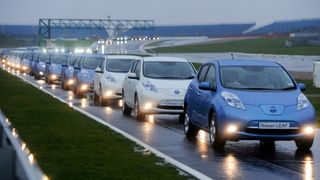Self-Driving cars could make driving through intersections faster
Slow is Faster

A new study has used mathematical modelling to explain how autonomous vehicles could ease the annoyance of hitting a busy intersection.
Professor Carlo Ratti from MIT's "SENSEable City Lab" has published a paper arguing that when every car on the road is packed full of sensors, traffic congestion could be mitigated through the principle of "slower is faster".
According to MIT, he argues that if we were to remove traffic lights, it "moves control from the [traffic] flow level to the vehicle level. Doing that, you can create a system that is much more efficient, because then you can make sure the vehicles get to the intersection exactly when they have a slot."
Slotting In
He proposes a system analogous to boarding a plane, where vehicles are sent through the intersection in batches, enabling them to move most efficiently and avoid a bottleneck situation. Using sensors in the road, he proposes that much further back vehicles get slowed down so by that they can be timed to hit the intersection at the right moment - "you build the phases of a traffic light dynamically", he is quoted as saying.
The only challenge with this proposal is that it might be difficult to implement in tightly packed cities with lots of intersections that are close to each other, as cars won't have the run-up necessary to slow down. So don't remove the road-rage suppression chip from your robot driver just yet.
The paper, "Revisiting street intersections using slot-based systems" can be read in PLOS One here.
Get daily insight, inspiration and deals in your inbox
Get the hottest deals available in your inbox plus news, reviews, opinion, analysis and more from the TechRadar team.
